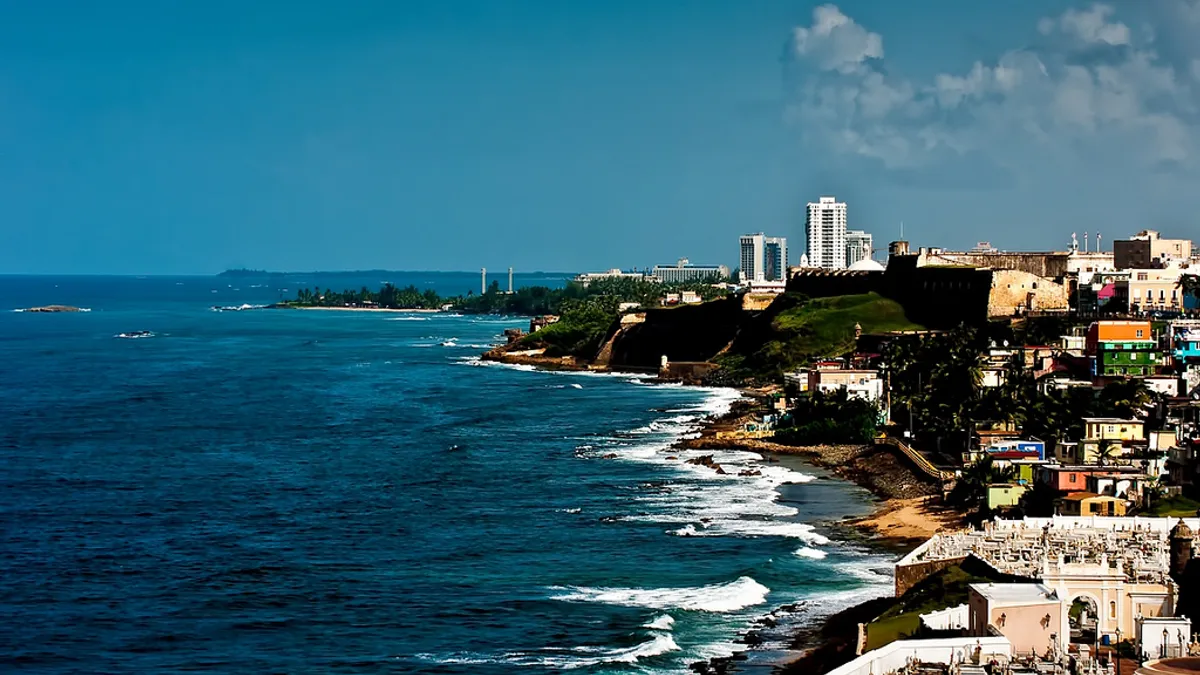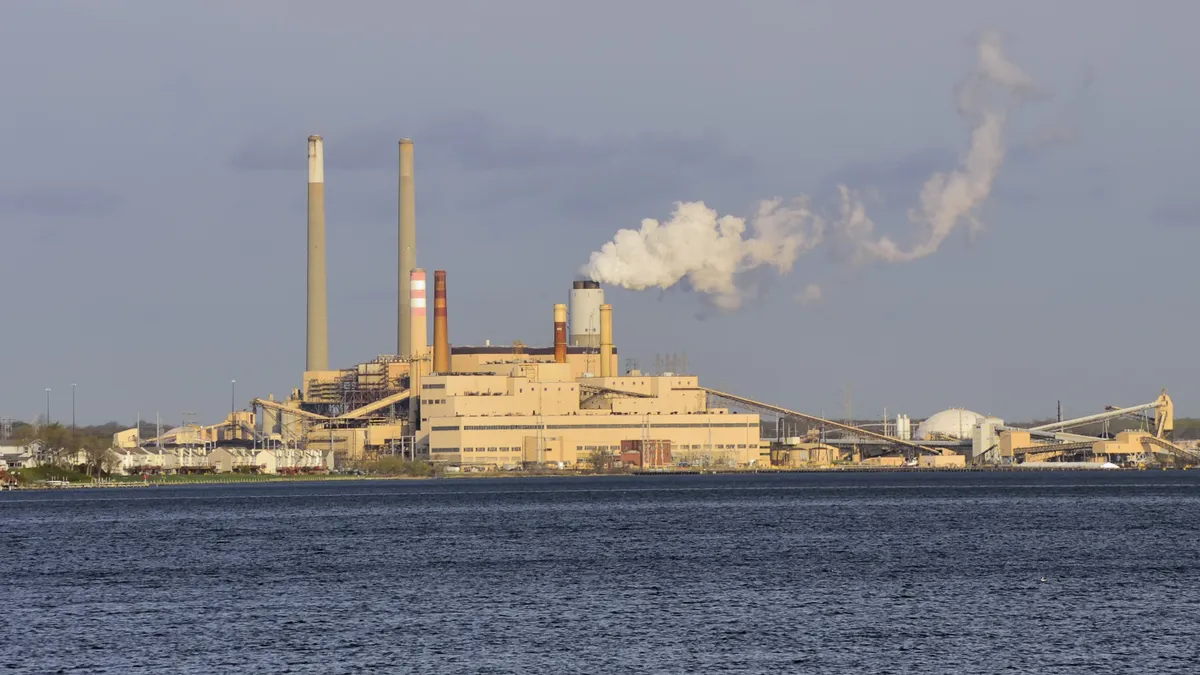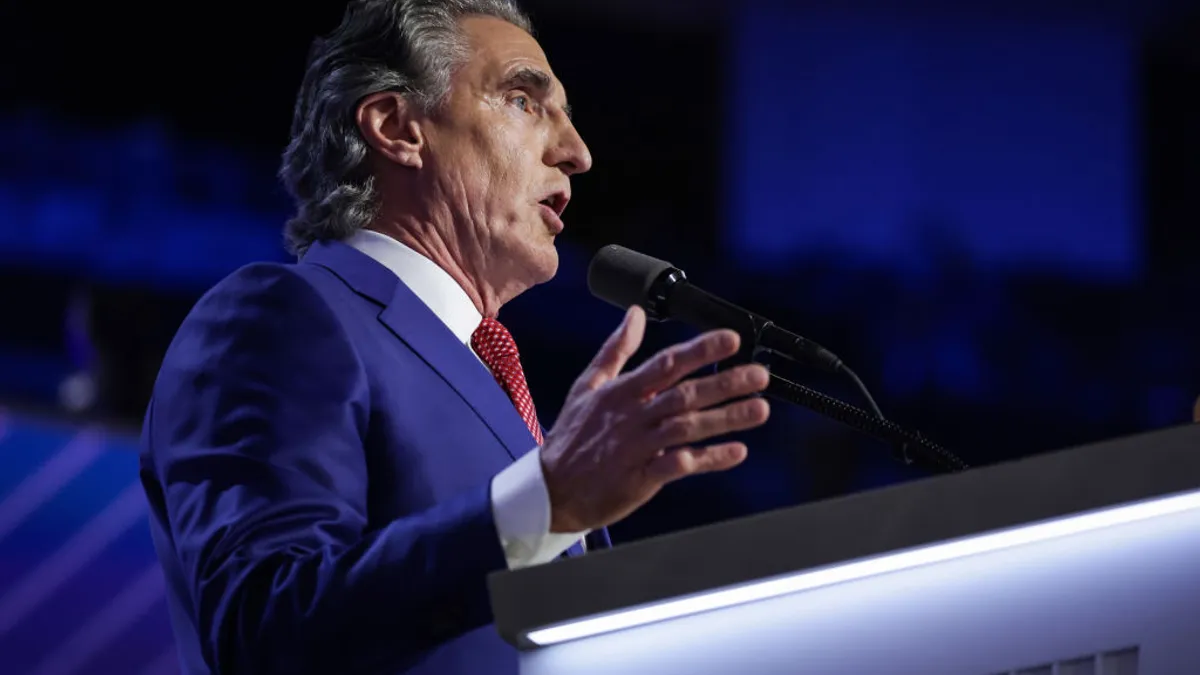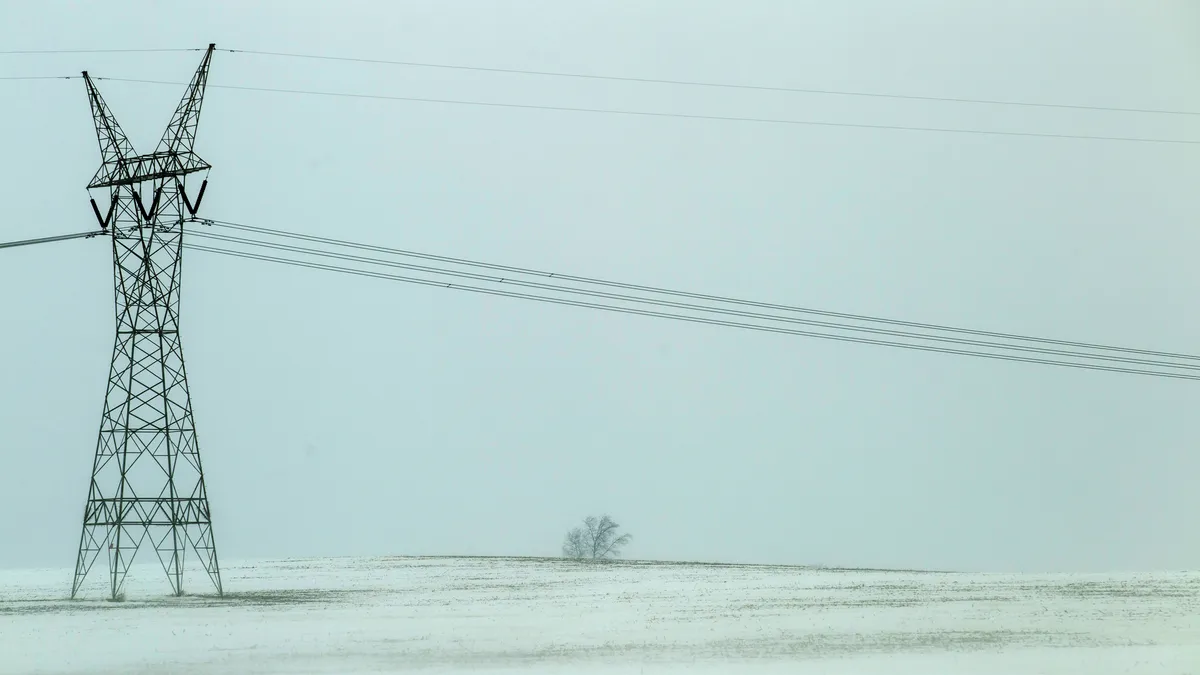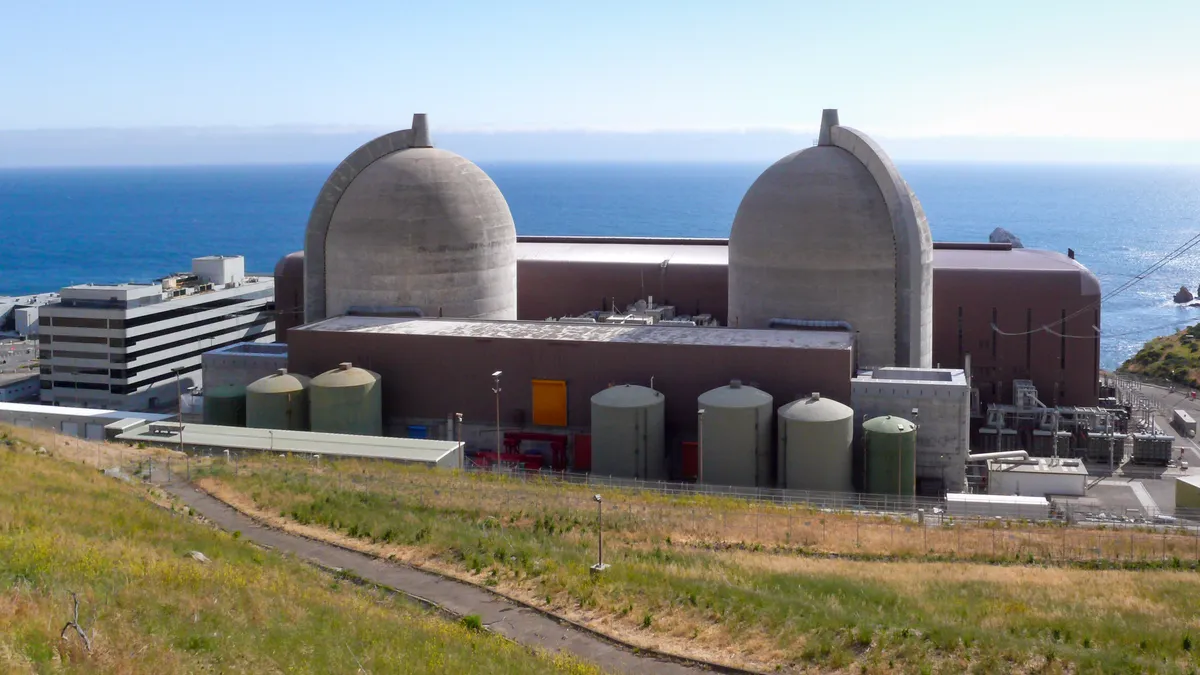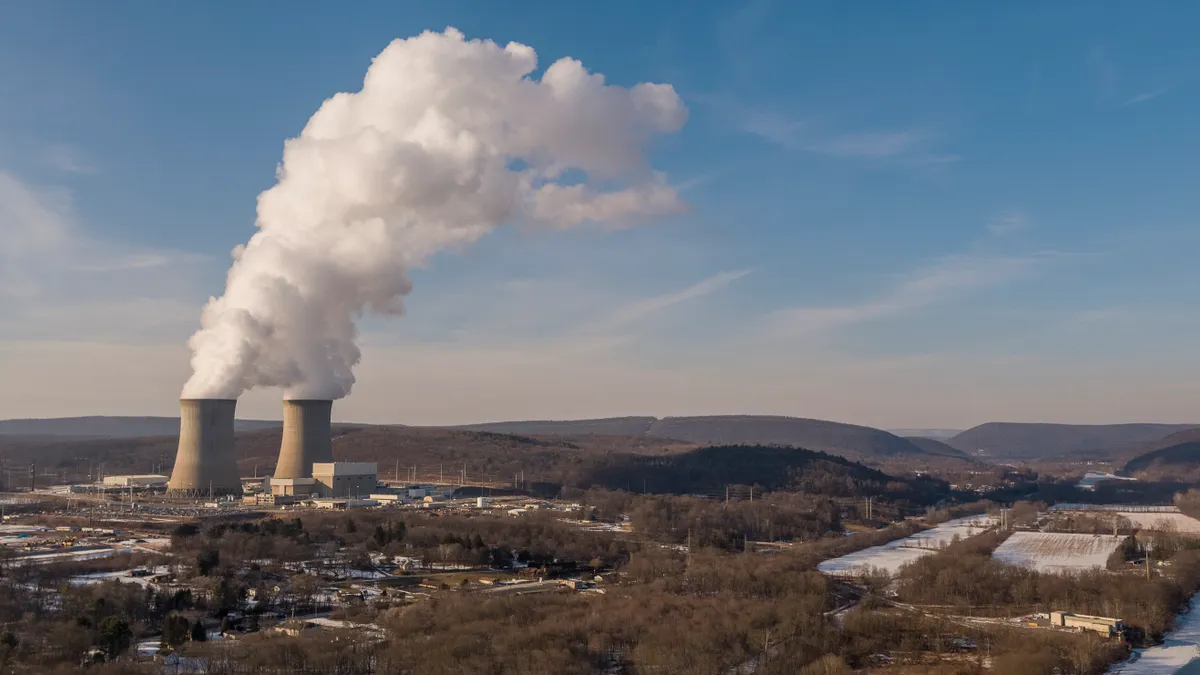The following is a guest post from former Puerto Rico Sen. Ramón Luis Nieves, chair of the Puerto Rico Senate Energy Affairs Committee from 2014 to 2016.
Puerto Rico has been characterized as “America’s Greece.” The national media routinely documents the American territory’s struggles with its huge $70 billion public debt.
Pursuant to the PROMESA Act, Congress imposed in 2016 a Financial Oversight and Management Board over the Commonwealth to deal with the Island’s fiscal nightmare.
An important, and controversial, portion of the Island’s debt was incurred by the Puerto Rico Electric Power Authority (PREPA). Created by a local Act in the 1940’s, PREPA is one of the largest public-power providers in the United States. PREPA was created as a public monopoly to be the sole provider of electricity in Puerto Rico. By 1981, its original mission was fully accomplished: to provide total electrification to the residents of Puerto Rico.
PREPA owns and operates power generation, transmission and distribution infrastructure. Two private entities and several utility-scale renewable energy projects, sell their energy to PREPA. These private entities account for more than a third of the Island’s electric power generation. As is the case with most Island electric power systems, which are isolated systems, PREPA depends mostly on imported oil to generate energy.
As accurately described by the Center for the New Economy, PREPA operated for more than 70 years as a tax-exempt, self-regulated, public monopoly, with broad powers including unsupervised rate-making, and debt-issuing authority.
Congress’s decision to repeal the IRC Section 936 tax incentive regime, Puerto Rico’s manufacturing backbone, precipitated a deep economic depression, now on its eleventh year. High oil prices, continued emigration of thousands of residents, and closing industrials have severely affected the revenues of the utility. PREPA and the governing political parties of the Commonwealth refused to adapt. They rather chose the slippery slope of enormous borrowing. In 2010, 2012 and 2013, PREPA authorized ten (10) bond emissions, for a combined amount of $5.3 billion in debt.
The push for energy reform
By 2013, the people of Puerto Rico had enough of PREPA. Residential customers were paying 30 cents kwh. All kinds of businesses were closing, blaming high energy prices. Politics governed PREPA’s decision making: from its governing board, full of political cronies, to its day-to-day management, and even the recruiting process of its employees. Any recently elected politician would be overwhelmed by hundreds of petitions from party loyalists to ‘facilitate’ recruitment at PREPA, known for the generous benefits of its collective bargain agreements. For years, also, political organizations operating at the heart of the utility raised thousands of dollars in campaign contributions.
In 2014, the Senate of Puerto Rico decided to put an end to the status quo. After months of debate and intense shouting and insults from the gallery by PREPA’s unions, energy reform was passed.
Act 57-2014, the “Act for the Transformation and Energy Relief of Puerto Rico” (better known as the “Energy Reform Act’), paved the way to end PREPA’s inefficient monopoly. The Energy Reform Act contains a strong and forward-looking declaration of public policy, as well as specific mandates to transform PREPA, and develop the framework for a vibrant private energy sector. The creation of a powerful and independent Energy Commission ended seven decades of self-regulation. The Energy Commission has broad powers of regulation and dispute resolution over PREPA and the private energy sector.
For the first time in its existence, PREPA was required to prepare an Integrated Resources Plan (IRP). The IRP creates a roadmap of the electric power system in Puerto Rico during a twenty (20)-year period. The Energy Commission now has the authority to approve PREPA’s rates, and concluded its first ever rate review in early 2017. For political reasons, PREPA’s basic rate had not been revised since 1989.
A new legal framework for energy regulation and management was established by Act 57. Apart from the powerful Energy Commission, the Act created the Independent Consumer Protection Office, an energy advocate for consumers. New powers of oversight and authority to implement energy policy were also delegated to the State Energy Public Policy Office.
Government agencies, municipalities and even the Legislature were given mandates of efficiency and energy reduction. The Senate forced municipalities to settle a decades-old dispute with PREPA over its controversial Contribution In Lieu of Taxes (CILT) formula, ordering a reduction of 15% in their energy consumption over three (3) years, and limiting their annual consumption thereunder.
Not satisfied with tackling substantial energy reform, the Senate decided to confront another hot-button political issue: energy subsidies reform. Energy subsidies where tailor-made for special interest groups or political constituencies. As established during months of controversial public hearings, PREPA passed on the cost of such subsidies to its non-subsidized customers, and even taxpayers in some cases.
On November, 2014, I filed an energy subsidies reform bill. The bill, which became Act 22-2016, eliminated energy subsidies for industries, and provided commonsense reforms and limits to other energy subsidies, including those given to residents of public housing and hotels. This Act, which was very controversial, ended the “free for all” in energy subsidies. For instance, Act 22-2016 dealt swiftly with the troubled relationship between PREPA and residents in public housing: 80% of the more than fifty thousand families living in public housing were on the verge of eviction for failure to pay their energy bills. A payment plan ordered by Act 22-2016, and a successful campaign by PREPA, saved more than forty thousand families from eviction, and recovered millions of dollars for the utility.
A $9 billion fiscal collapse
In 2014, PREPA collapsed under its $9 billion debt. Bankruptcy was not an option because Congress, in a yet unexplained 1984 decision, mysteriously excluded PREPA from the bankruptcy provisions of Chapter 9. The local legislature tried to provide a “bankruptcy type” solution for PREPA, but the so-called Recovery Act was struck down by the United States Supreme Court in 2016.
Amidst the general discussion of the Island’s debt woes, PREPA engaged with its bondholders to explore restructuring alternatives. On September 2015, a restructuring agreement (RSA) was reached, subject to several conditions which have yet to fully materialize. The agreement was the result of tough negotiations between bondholders and the former chief restructuring officer of PREPA, Lisa Donahue. The RSA required legislative action to be implemented, which took form on a bill entitled the “PREPA Revitalization Act”, later Act 4-2016.
The bill originally proposed to prohibit political contributions and active participation by PREPA’s board members and top management. As Chairman of the Energy Committee of the Senate, I suggested to go one step further: to enact a full prohibition of political activities and fundraising for all employees and board members, and a prohibition on mayors, legislators, and even the Governor to intervene in contract procurement and labor decisions (such as the recruitment of political cronies). Politics had seriously damaged PREPA’s operations and morale for decades. The Governor agreed to these provisions, which were modeled on the federal Hatch Act.
PREPA’s governing board, formerly composed by political appointees and officials from the administration, was radically changed. Except for some members elected by residential and commercial customers, six of the members were selected by the Governor from a list submitted by a private executive search service. The new board members, truly qualified professionals confirmed by the Senate on December, 2016, made up the first non-partisan and independent board in the history of the utility. But it was short-lived. A bill was passed by the Legislature in 2017 to return control over PREPA’s governing board to the Government, a substantial setback for energy policy and reform. However, as a result of a tentative deal with PREPA’s bondholders, it appears that the governing board will now be composed by three appointees by the governor, three independents and three consumer representatives.
The most important aspects of Act 4-2016 are its provisions for the securitization of the outstanding debt. The mechanism established by the Revitalization Act would require bondholders to exchange their bonds for new bonds to be issued by an entity independent from PREPA. According to the 2015 RSA, these new bonds would reflect a 15% “haircut”.
Renewables, community solar, microgrids and wheeling
The systemic problems of PREPA do not, and cannot, represent the “be all, end all” for the energy sector in Puerto Rico. The residential, industrial and commercial customers of the utility are anxiously looking for alternatives to lower their energy costs. For the past decade, policymakers have responded with laws creating a green energy fund, renewable portfolio standards, as well as authorizing net-metering, wheeling, community solar, and microgrids.
A Green Energy Fund (GEF) program was enacted by Act 83-2010. The GEF is funded by excise taxes collected on motor vehicles, among other sources. Through a very sought after competitive process, almost two thousand residential and commercial projects benefited from the GEF since its creation.
Puerto Rico enacted Renewable Portfolio Standards (RPS) in 2010, pursuant to Act 82-2010. By 2016, twenty-nine (29) states, the District of Columbia, and other U.S. territories, had RPS policies. The RPS requires that, for the current period of 2015-2019, 12% of the energy produced in Puerto Rico is generated through renewable energy, 15% for the period of 2020-2027, and a 20% goal for 2035.
In 2012, PREPA rushed to approve sixty-three power purchase agreements (“PPA’s”) for utility-scale renewable energy projects. A new management team at PREPA decided in 2013 to take a closer look into the 63 PPA’s. Objectionable terms in several PPA’s, among other reasons, forced PREPA to renegotiate. The fiscal collapse of the utility in 2014 deprived most of the projects of funding.
Finally, in February 2014, PREPA disclosed a report commissioned to Siemens PTI. One of the weaknesses of the 2010 RPS was that its mandates were not based on a comprehensive study to determine the acceptable amounts of renewable energy that the grid could tolerate. The report concluded that PREPA’s grid, on its current state, only tolerated integration of 580 MW of renewable energy, not including the impact of net-metering.
Almost a decade after the 12% RPS mandate was enacted, less than 2% of energy in Puerto Rico is generated by renewables, an unacceptable failure.
The uncertainty with utility-scale projects is countered by the growth of distributed generation.
A Net Metering Program was enacted in 2007, allowing PREPA’s customers to use electricity generated by solar, wind or other renewable-energy resources to offset their electricity usage. The utility resisted implementation of net metering for years. One of the main sponsors of Act 114-2007 told me that employees from the utility warned him that “you got the law signed, but we won’t implement it”.
For years, PREPA continued imposing obstacles to the net metering program. According to the renewable solar industry, the slowest jurisdiction in the United States to interconnect net metering clients takes an average of 75 days, while in Puerto Rico the average was 250 days, in 2014 numbers.
The last bill that I sponsored during my senatorial tenure, which became Act 133-2016, sought to remove obstacles imposed by PREPA to its net metering program, and to modernize it. The new law requires PREPA to use meters that can be read remotely. Physical access to the meter will no longer be required at any stage of interconnection. The law also required PREPA to create an electronic filing system.
Recently enacted regulations under Act 133-2016 established an expedited plug-and-play interconnection process for systems with a generation capacity of 10kW or less installed in residences and businesses. The regulations also created an Aggregate Net Metering Program for government entities and not-for-profit university institutions, and a Shared Metering Program for residential and commercial clients in condominiums. The solar industry hopes that these regulations implementing Act 133-2016 will give a big push forward to net metering.
The private sector has long demanded PREPA to authorize wheeling. Under Act 73-2008, PREPA was required to lease its grid to private power producers who wished to transmit power to third-party consumers. Even while ordered by law since 2008, PREPA failed for years to regulate and set fees for the use of their transmission and distribution lines between private parties. The Energy Commission now has the responsibility to regulate wheeling.
Act 133-2016 also ordered the Energy Commission and the State Energy Public Policy Office to create regulations for community solar and microgrids. 15 states, the District of Columbia, and now Puerto Rico, have community solar policies. Community solar has been defined as “a shared renewables program which allows multiple consumers to share the economic benefits from one renewable energy system via their individual utility bills”.
The legislative intent behind the community solar provisions of Act 133-2016 is to “democratize” access to solar energy by individuals and business. Even though costs have gone down in recent years, solar energy remains inaccessible to most lower and medium income families. Regulations implementing community solar must facilitate that more individuals and business share the benefits of solar energy.
Microgrids present a unique opportunity for industries and residential communities. Although used for decades, Hurricane Sandy in 2012 opened a new dialogue on microgrids in the United States. Several business models for microgrids are actively discussed by energy stakeholders. Prominent researchers at the University of Puerto Rico-Mayagüez College of Engineering, such as Efraín O’Neill, Ph.D., contribute regularly to the discussion with research on the possibilities of microgrids. Section 10 of Act 133-2016 orders the Energy Commission to establish the regulatory framework for PREPA to create regulations on microgrids.
The fate of the RSA
The fate of the RSA between PREPA and its bondholders, extended seventeen times since 2015, is intertwined with the Island’s economic development. Final agreement on the rate hikes contemplated by the RSA will determine whether energy costs continue to harm the economy of Puerto Rico.
PREPA’s 2015 deal with 70% of its bondholders has been duly criticized. The current administration of the Commonwealth pushed to amend the RSA to obtain larger concessions from all PREPA bondholders. On March 22, 2017, Congress held public hearings on the status of RSA negotiations.
As contemplated by Act 4-2016 and the RSA, a Provisional Rate of $0.01299/kWh went into effect in 2016 (and was later reduced 21% by the Energy Commission). The Energy Commission also approved a $0.031/kWh Transition Charge in 2016, effective once the proposed securitization is done.
On April 6, 2017, the government and the participating bondholders announced a tentative deal to amend the RSA, with additional concessions from the bondholders. The government expects that the amended RSA will achieve $2.2 billion in debt service savings between 2018 and 2022. A final deal under those terms, which is supposed to be executed before the end of April 2017, could help PREPA and the Energy Commission lower the proposed Transition Charge. A lower Transition Charge will soften the impact of a rate hike on the depressed economy of Puerto Rico.
Energy PPP’s
Encouraging private investment in energy projects for PREPA is the public policy of Puerto Rico since Act 57-2014. The policy of the current administration of the Commonwealth is to facilitate investments in energy infrastructure through public-private partnerships (PPP’s). The PROMESA Act gives a big push to this policy.
Title V of PROMESA provides for the appointment of a Revitalization Coordinator who will assess “critical projects” to (i) improve performance of energy infrastructure and overall energy efficiency; (ii) expedite the diversification and conversion of fuel sources for electric generation from oil to natural gas and renewables; (iii) promote the development and utilization of energy sources found on Puerto Rico; (iv) contribute to transitioning to privatized generation capacities in Puerto Rico and (v) support the Energy Commission in achieving its goal of reducing energy costs and ensuring affordable energy rates.
The government enacted its first piece of legislation, Act 1-2017, to facilitate “participatory public-private partnerships”, and convened a “P3 Summit” to promote PPP’s for several initiatives, including energy projects. 2017 is shaping up to be a competitive year for energy projects in Puerto Rico.
An energy revolution
Consumers, the main stakeholders of an energy system, are concerned about two things: how high are their monthly bills, and how often the service is interrupted. To satisfy those concerns, public policy must create a proper balance between the interests of consumers and other key stakeholders, such as utilities, the energy industry, regulators, policy-makers, bondholders, researchers, and community-based organizations.
After years of frustration and public skepticism, the Energy Reform Act of 2014 addressed the need for a new and forward-looking energy policy for Puerto Rico. Other laws and regulations complement Energy Reform, and respond to the new paradigm set forth therein.
Residential consumers, public-policy makers, and the private sector must continue pushing for the energy revolution that is transforming Puerto Rico.
Former Sen. Ramón Luis Nieves served as chairman of the Energy Committee of the Senate of Puerto Rico, where he championed energy reform between 2014-2016. Currently, Nieves is the managing member of RL Legal & Consulting Services, LLC, based in San Juan, Puerto Rico.


